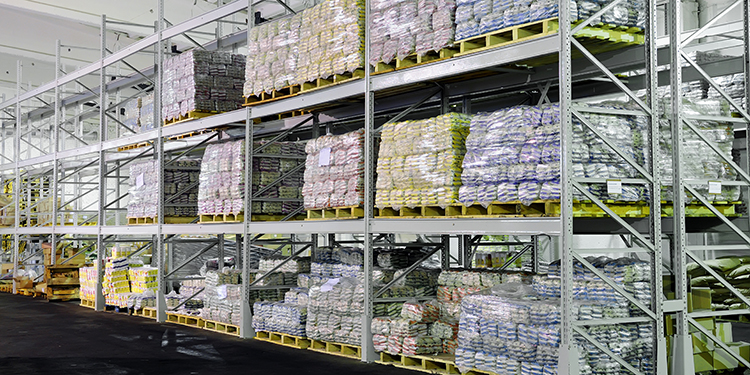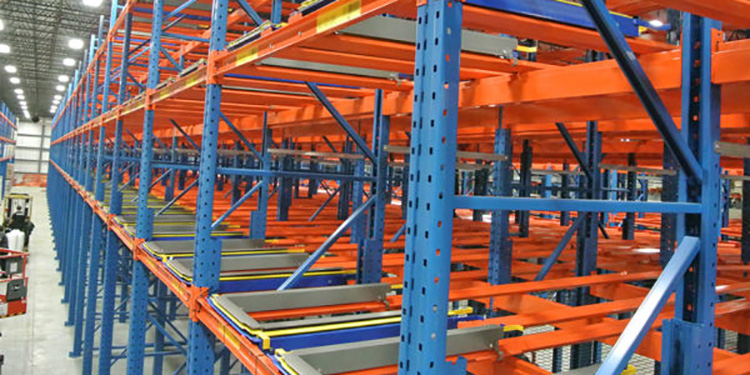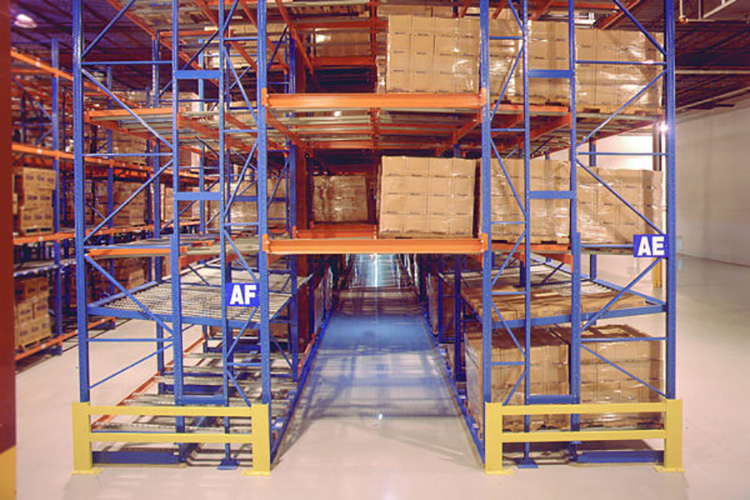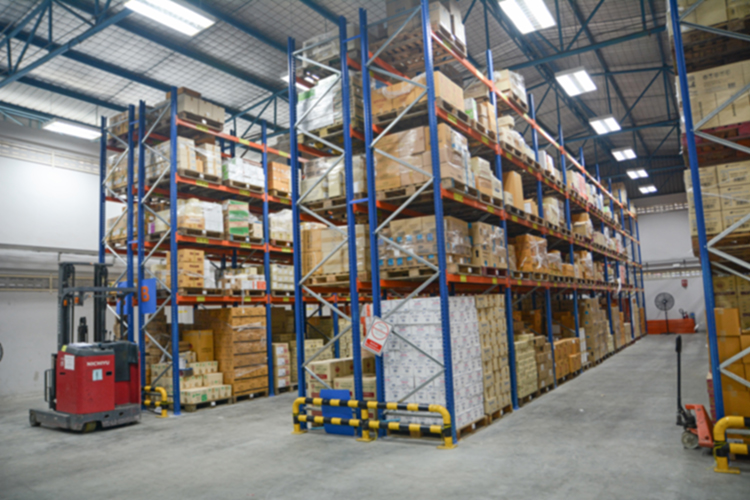Rack Design Best Practices For Food Storage

No two rack designs are alike. That statement is particularly true for warehouses and distribution centers handling food. For safe and efficient storage of perishables, shelf-ready, or frozen products, the design, layout, construction, and finish of pallet rack must meet specific parameters. Indeed, there are several rack design best practices for food storage.
“Different foods require different storage temperatures. The type of products handled has a significant impact on the rack design,” said Jonathan Hirst, Vice President and General Manager at North American Storage. The company is a member of the Rack Manufacturers Institute (RMI). “Therefore, it’s important to keep several considerations in mind when evaluating different food storage rack designs.”

Different Food Storage Environments Require Different Rack Finishes
Depending on the temperature and humidity levels in a food storage area, the rack may require different coatings or finishes. “Having the right finish can help to preserve the integrity of the rack components,” Hirst noted. “Different storage environments call for specific finishes.”
Painted rack finishes are fine for shelf-ready packaged foods stored in ambient, non-temperature controlled, environments. However, if the food products — or ingredients — have the potential to contact the rack, Hirst advised powder coating.
“Powder coating creates a baked plastic coating on the rack. These coatings are frequently food safety certified,” he said.
Paint is also a good option for food storage rack installed in freezers kept at 32-degrees Fahrenheit (0-degrees Celsius). “It’s a cold, dry environment, so there’s no concern about rusting. In a freezer, painted rack has a lifespan up to 25 years,” added Hirst. “However, paint is a poor choice for rack installed in refrigeration or coolers.”
That’s because coolers — with a temperature range of 33- to 43-degrees Fahrenheit (0- to 6-degrees Celsius) — are typically high humidity or even wet environments. Typically storing perishables like fruits and vegetables, dairy products, eggs, or yeasts, the high levels of moisture can cause steel racking to rust quickly.
“In coolers best practice is to install only hot dip galvanized rack components,” Hirst said. “The process deposits a gray zinc coating, which protects the steel underneath. Without a galvanized coating, the rack will likely rust out within three to five years.”
Other food storage applications that call for galvanized rack coatings include washdown or sanitization environments to meet Food and Drug Administration (FDA) regulations. “Also, spices can be highly corrosive, and therefore need galvanized rack,” he added.

High Density Rack Critical for Temperature-Controlled Food Storage
It’s expensive to maintain proper temperatures in freezers and coolers. For that reason, maximizing rack storage density is so critical, the design of the rack often supersedes the design of the building.
“In temperature-controlled food storage areas, the rack design drives the building layout,” Hirst said. “After determining the building envelope, the designer will accommodate the racking. They will move columns and other structural features to achieve the maximum rack storage density possible within the footprint of the space.”
Long-term freezer storage applications — at an ice cream manufacturer for example — are good candidates for drive-in or pushback rack. These two types of deep-lane rack create highly dense, last-in/first-out (LIFO) storage. “For this type of application, FIFO inventory management is typically driven by the size of a shipment. That is, for a manufacturer who is shipping a full truckload to a grocery distribution facility,” explained Hirst.
First-in/first-out (FIFO) storage is also important in ambient temperature and refrigerated cooler rack storage applications. Pallet flow rack, another type of high-density storage, is usually the optimal choice for these environments. “That’s because these operations tend to move product by the pallet or based on the production date,” Hirst continued. “In these instances, it’s important to ship the products with the closest ‘best by’ dates out first to avoid spoilage.”

Rack Construction and Layout Supports Vermin Control
Where there’s food, there’s the potential for vermin — typically rodents. There are a couple of approaches in rack component construction and layout that can help deter these pests, said Hirst.
“Depending on the type of products being stored and how desirable vermin find them, there’s usually a sanitary requirement to place the rack at least 18 to 36 inches away from exterior walls,” he noted.
“That’s partly to leave space for traps and for access to check them. But also, vermin tend to travel close to walls,” continued Hirst. “Generally, they won’t stray from walls any farther than 18 inches, unless the food or ingredients are particularly enticing. But pet food, flour, granola bars, and industrial bakeries the distance is usually 36 inches.”
In addition to proper spacing away from walls, another rack design best practice to deter vermin is creating sanitary frames. This means the rack manufacturer seals or caps any holes or cavities in the lowest 36 inches of the rack uprights and beams.
“It’s important to keep the interior at the lowest point in the rack smooth so the vermin cannot climb up it,” he explained. “Also, capping any open cavities — like welded deflectors or tube style rack — eliminates potential nesting habitats.”

Ergonomic Rack Bays at Floor Level for Case Picking
Food products are often case or each picks from floor level pallets. That translates into a lot of bending, stretching, and reaching for associates as they build mixed loads for store replenishment orders. To reduce the physical strain, multiple rack manufacturers offer ergonomic beams. They’re installed in the lowest level of racking in forward pick zones.
“Instead of a single straight horizontal beam that spans the distance between the columns, these beams are split. Installed as two separate curves — they look a little like elephant ears —one pallet sits on each side,” described Hirst. “There’s a gap in the middle that allows associates to step into the bay. That enables them to reach all four corners of a 40 x 48-inch pallet more easily.”
Discover More Rack Design Best Practices
Looking for more insights into rack design? RMI offers several resources and publications, including the recently updated “Considerations for the Planning and Use of Industrial Steel Storage Racks.” Additionally, the members of RMI are available to provide guidance, suggestions, and recommendations. For more information, visit mhi.org/rmi.


